NASA Finds A New Way To Travel To The Moon Faster Using 20% Less Fuel
Dhir Acharya - Sep 07, 2020

NASA just patented a new way to go the Moon cheaper and faster, and it doesn’t involve a new complex spacecraft technology.
- Scientists Want To Send 6.7 Million Samples, Including Sperm, To The Moon
- Russia Will Build A Lunar Space Station With China Because It's Done With NASA
- NASA Reveals 20 Most Stunning Earth Images Taken From The ISS
Space travel has been a very expensive area to invest in, so any new idea that can help drive down the cost is always appreciated. NASA just patented a new way to go the Moon cheaper and faster, and it doesn’t involve a new complex spacecraft technology.
It appears that the space agency has discovered a new trajectory to Earth’s natural satellite that will make future lunar missions more efficient. With the new method, a small unmanned spacecraft can reach the Moon pretty fast while using very little fuel.
Patented this method in June, this method lets an unmanned spacecraft hitch a ride with communication satellites to get in the high-Erath orbit before it uses the gravity of the Earth and Moon to perform a maneuver to the Moon.
The maneuver is described in the patent as a way to get a spacecraft transferred from a geosynchronous transfer orbit to the lunar orbit.
Reports say that the new trajectory will be used in Dapper (Dark Ages Polarimeter Pathfinder) that’s aimed at recording from the dark side of the Moon. The mission will record low-frequency radio waves produced during the early formation of the Universe.
The new trajectory appears when the Dapper mission needs executing at the lowest cost possible due to a limited budget of $150 million. Astrophysicist Jack Burns said:
“This trajectory to the moon arose out of necessity, as these things often do. We needed to keep the launch costs low and find a cheap way to get to the moon.”
The new method won’t allow for reaching the Moon in just a few days like the Apolo 11 mission, but it will be much faster than small missions that use much less fuel. According to NASA’s estimations, the new method will take a spacecraft to the Moon in 2.5 months while traditional missions take up to 6 months.
>>> Crew Isolating Themselves As NASA Hunts For Air Leak On The ISS
Featured Stories
Features - Jul 01, 2025
What Are The Fastest Passenger Vehicles Ever Created?

Features - Jun 25, 2025
Japan Hydrogen Breakthrough: Scientists Crack the Clean Energy Code with...
ICT News - Jun 25, 2025
AI Intimidation Tactics: CEOs Turn Flawed Technology Into Employee Fear Machine

Review - Jun 25, 2025
Windows 11 Problems: Is Microsoft's "Best" OS Actually Getting Worse?

Features - Jun 22, 2025
Telegram Founder Pavel Durov Plans to Split $14 Billion Fortune Among 106 Children

ICT News - Jun 22, 2025
Neuralink Telepathy Chip Enables Quadriplegic Rob Greiner to Control Games with...

Features - Jun 21, 2025
This Over $100 Bottle Has Nothing But Fresh Air Inside

Features - Jun 18, 2025
Best Mobile VPN Apps for Gaming 2025: Complete Guide

Features - Jun 18, 2025
A Math Formula Tells Us How Long Everything Will Live
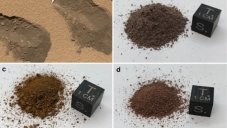
Features - Jun 16, 2025
Comments
Sort by Newest | Popular